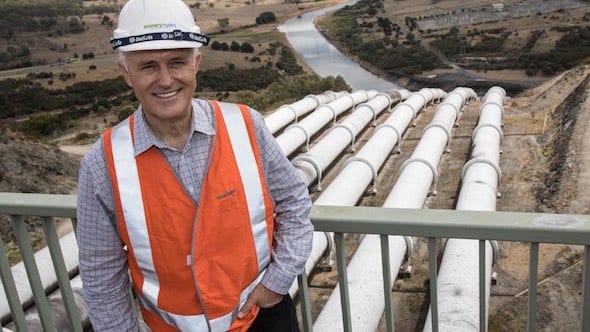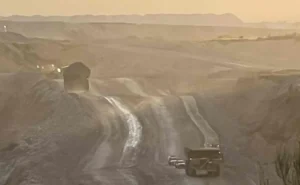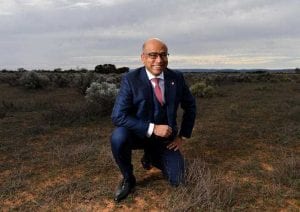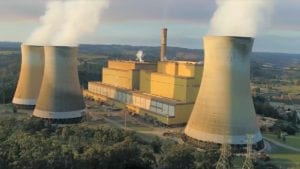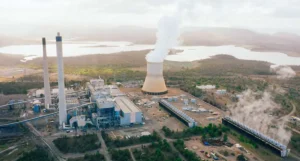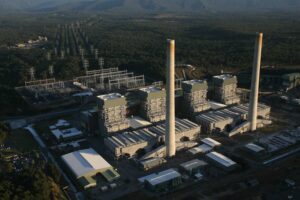
Snowy Hydro has moved to dispel some of the principal concerns around its ambitious Snowy 2.0 pumped hydro project, arguing that it will likely accelerate the uptake of wind and solar, and will not underpin the future of coal – despite an independent experts report suggesting otherwise.
In a briefing in Sydney this week, senior executives from Snowy 2.0 played down the suggestion made in the independent report from Marsden Jacob that Snowy 2.0 would result in more coal being burned because the presence of the 2GW and 175 hours of pumped hydro storage project.
The Marsden Jacob report asserted that Snowy 2.0 would “improve the economics of coal-fired generation” and that as a result emissions will likely rise, and coal-fired power plants will be used more.
“That’s not what we want to see,” says Gordon Wymer, the company’s former CFO who has just shifted to a new role as Head of Commercial, that includes strategy and carriage of the Snowy 2.0 project.
Wymer says that while the Marsden Jacob report was very useful, some of its conclusions differs from Snowy Hydro’s own analysis – which the company has yet to release in detail.
But Wymer says Snowy Hydro has no interest in supporting coal generators and instead suggests Snowy 2.o would likely bring in an extra 400-800MW of large-scale wind and solar projects that would otherwise not be built – because of its need for cheap power to pump water uphill.
He says wind and solar provide the best opportunities to do that – such as in early morning (3am) for wind, and the midday hours for solar.
Snowy Hydro has begun discussions to write contracts to provide a “floor price” for wind and solar projects, giving them enough certainty to lock in finance and allowing them to reap any upside in the wholesale markets, as well as reducing Snowy’s dependence on coal contracts.
Snowy Hydro finds itself in an interesting position. It sees Snowy 2.0 as critical for its own future, and crucial for the inevitable energy transition to a grid dominated by wind and solar, storage and distributed generation.
It has seized the political moment and won the support of prime minister Malcolm Turnbull, for whom the Snowy 2.0 project could be his signature initiative, or even his legacy project, given his inability to advance credible policies elsewhere.
But political patronage – and now 100 per cent ownership – carries risks, because the $6 billion (and counting) project proposal also becomes a political tool as well as a government asset.
Sure enough, Snowy 2.0 has been used by Turnbull and Frydenberg to hit the Labor states like Victoria and South Australia on the head, and to be critical of their renewable energy targets and battery storage plans.
The federal government has made clear – through its own speeches and the assumptions of the proposed National Energy Guarantee – that it regards anything approaching a 50 per cent renewable energy target by 2030 as “reckless”.
This has raised suspicion about its motives with Snowy 2.0. When first announced, Turnbull spoke enthusiastically about the need for “dispatchable energy”, but the rhetoric has since been switched to “baseload” and it wants the Clean Energy Finance Corp to fund carbon capture and storage.
These atmospherics have been exacerbated by some of the conclusions from the Marsden Jacob report, particularly its reference to the support for coal plants, and the suggestion – encouraged by the Marsden Jacob and Coalition rhetoric – that this is about Snowy 2.0 vs battery storage.
Snowy Hydro has become alarmed about this increasing perception that Snowy 2.0 would principally result in more coal being burned to push water up hill – until such time as renewables became a majority supplier to the grid – and of crowding out competition.
Wymer insists that Snowy’s future does not rely on the same scenario as the other big three (coal-burning) gen-tailers- AGL, Origin, and EnergyAustralia – and its plans are likely to be opposed by them.
He says Snowy Hydro’s future relies on a rapid transition to renewables – “otherwise we (Snowy’s business model) is toast”.
He says of the coal generation plant owners: “It is not in their interest to support decarbonisation. It is not in their interest to support Snowy 2.0 … because too much wind and solar weakens the competitive position of a coal plant.”
The Snowy 2.0 project plays a key role in the company’s plans to match its supply with demand from its growing number of customers, currently at 1.1 million through Red Energy and Lumo.
At the moment it needs 7.4TWh but can only supply 4TWh of its own power now. And because of the grid’s dependence on coal, that ends up being its predominant source of power.
But it also means that Snowy is not a price setter at high prices. Indeed, it argues it is as much of a victim of high prices as other customers (although its financial results might suggest otherwise).
It says that apart from being a major price setter at around $300/MWh – to defend its share of the “caps” market, it is all but invisible at higher pricing levels.
By writing “floor” contracts with new wind and solar plants, Snow Hydro says it can guarantee low cost supply to pump water up hill, the wind and solar plants are protected from negative price events, but the baseload generators remain exposed.
“Coal plants can’t deal with the intermittency. If we foster more wind and solar that is a huge negative for coal.”
Part of the confusion may be because Snowy Hydro is yet to release its own detailed economic modelling – due to its insistence that it is “commercial in confidence.”
But Wymer does say that the value of the project lies not just in the value of storage or arbitrage – but is based 40 per cent on storage revenue, 40 per cent on capacity and balancing revenue, and 20 per cent on ancillary services.
Wymer also sought to dispel the view that Snowy Hydro saw its project as a case of pumped hydro versus batteries, a fear that emerged as the result of Snowy’s previous excursions in the media, as well as observations made by Marsden Jacob.
It would certainly means less storage would be needed than otherwise, but he said batteries were playing in a different market to large-scale storage like pumped hydro, and Snowy itself would be a major investor in batteries, particularly as the new 5-minute settlement rule is introduced.
“We are not anti-battery,” Wymer says, adding that batteries will play a key role in the grid, in local storage, micro-grids, and grid stability. “Our biggest risk is the National Electricity Market and its potential obsolescence.”
For this reason, he argues that wind and solar will – and must – lead to fare lower prices than any other energy mix.
“We also believe that if the NEM does not pass through competitive pricing to consumers, then they )the customers) will look after themselves. If the (numbers connected to the) NEM is in decline, that is a disaster scenario.”
We hope he is right. When Turnbull first announced the idea, early last year, we wrote this analysis: Turnbull drives stake through heart of fossil fuel industry.
That assessment was based on his focus on terms such as “dispatchable generation”, a language that has largely disappeared from his lexicon as the Coalition tries to force AGL into keeping Liddell open for another 5 years and pushes the idea for new coal plant and even carbon capture and storage.
A grid based on new “base-load” coal generation would seem an anachronism, given the cost trajectories of wind, solar and energy storage. It would also make projects like Snowy 2.0 look like Trojan horses.
But Wymer makes a strong case to think that our first reaction could be the correct one, and the business case for Snowy 2.0 wouldn’t work otherwise. But there’s still work to do. The environmental issues have yet to be resolved, and the economic case is not yet proven. Time will tell.

